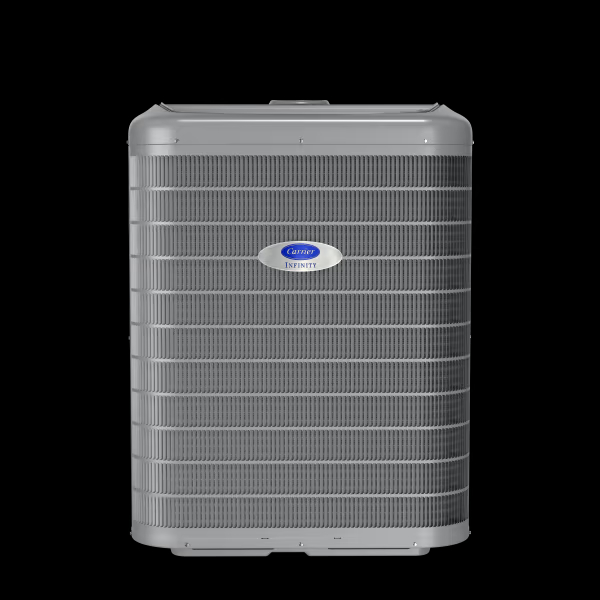A Complete Guide to Home Heating and Cooling Systems
HOME SUPPLIES
5/13/20243 min read


In today's world, home heating and cooling systems play a crucial role in maintaining indoor comfort and air quality. Whether you're looking to upgrade your existing system or exploring new options, understanding the different types of systems available can help you make informed decisions. In this comprehensive guide, we'll delve into various heating and cooling solutions, including air conditioners, furnaces, heat pumps, ductless systems, thermostats, smart thermostats, air monitors, air purifiers, and humidifiers.
Air Conditioners:
Air conditioners are essential for keeping indoor spaces cool during hot weather. They work by extracting heat from indoor air and transferring it outside, using a refrigerant cycle. Modern air conditioners are energy-efficient and come in different types, such as central air conditioning systems, window units, and portable air conditioners.
Furnaces:
Furnaces are primary heating systems that use either gas or electricity to generate heat. They distribute warm air throughout the home via ductwork and vents. Gas furnaces are popular for their efficiency, while electric furnaces are cleaner and easier to maintain.
Heat Pumps:
Heat pumps provide both heating and cooling by transferring heat between indoor and outdoor environments. During winter, they extract heat from outdoor air (or the ground with geothermal heat pumps) and transfer it indoors. In summer, the process is reversed to cool indoor spaces.
Ductless Systems:
Ductless heating and cooling systems, also known as mini-split systems, are ideal for homes without ductwork. They consist of an outdoor compressor/condenser unit and one or more indoor air-handling units. Ductless systems are highly efficient and allow for personalized comfort settings in different zones of the home.
Thermostats:
Thermostats control the operation of heating and cooling systems by regulating indoor temperatures. Traditional thermostats are manually operated, while programmable thermostats allow users to set heating and cooling schedules for energy savings.
Smart Thermostats:
Smart thermostats are a modern innovation that offers advanced features such as Wi-Fi connectivity and smartphone app control. They can learn your heating and cooling preferences, adjust settings automatically based on occupancy, and provide energy usage reports.
Air Monitors:
Air monitors are devices that measure indoor air quality parameters such as particulate matter, VOCs (volatile organic compounds), humidity, and carbon dioxide levels. They provide real-time data to help users understand and improve indoor air quality.
Air Purifiers:
Air purifiers remove contaminants like dust, pollen, pet dander, and airborne pollutants from indoor air. They use filters, ionization, or UV light to purify the air, making it healthier to breathe.
Humidifiers:
Humidifiers add moisture to indoor air to maintain optimal humidity levels, especially during dry winter months. They can help alleviate respiratory issues, dry skin, and static electricity.
Choosing the right heating and cooling systems for your home depends on several factors, including climate, budget, energy efficiency goals, and personal preferences. Here are some tips for selecting the best systems:
Energy Efficiency: Look for systems with high SEER (Seasonal Energy Efficiency Ratio) ratings for air conditioners and heat pumps, and AFUE (Annual Fuel Utilization Efficiency) ratings for furnaces. Energy-efficient systems can lower utility bills and reduce environmental impact.
Size and Capacity: Ensure that the system you choose is appropriately sized for your home. An undersized system won't heat or cool effectively, while an oversized system can lead to inefficient operation and higher energy bills.
Installation and Maintenance: Consider the ease of installation and maintenance requirements for each type of system. Ductless systems, for example, are relatively easy to install and offer flexibility in placement.
Smart Features: Smart thermostats and HVAC systems provide convenience and energy savings. Explore options with features like remote control, scheduling, and integration with smart home platforms.
Indoor Air Quality: For improved indoor air quality, consider pairing your heating and cooling system with air purifiers, air monitors, or humidifiers.
Regular maintenance and professional installation are essential for optimal performance and longevity of heating and cooling systems. Consult with HVAC professionals to assess your home's heating and cooling needs and explore the best solutions tailored to your specific requirements.
In conclusion, understanding the different types of heating and cooling systems available can empower homeowners to make informed decisions about their indoor comfort and air quality. Whether you're upgrading an existing system or starting fresh, consider energy efficiency, system size, smart features, and indoor air quality enhancements to create a comfortable and healthy living environment.
By leveraging technology and best practices, modern heating and cooling systems can provide efficient, cost-effective, and sustainable solutions for year-round comfort in homes of all sizes and configurations.


